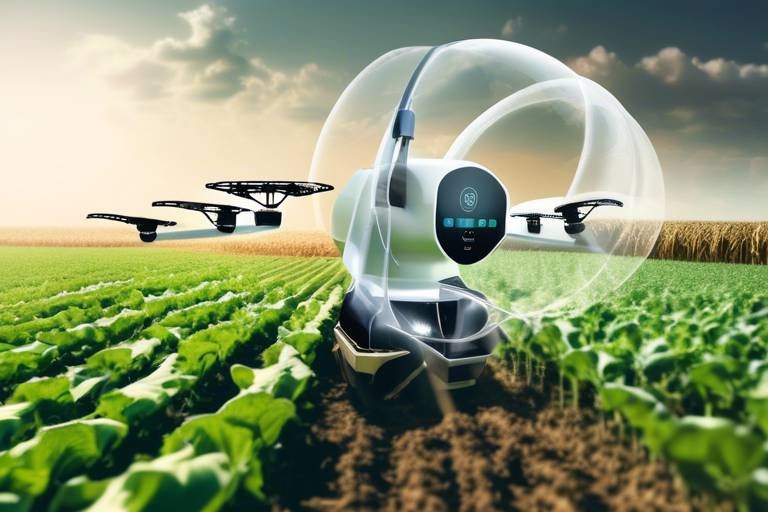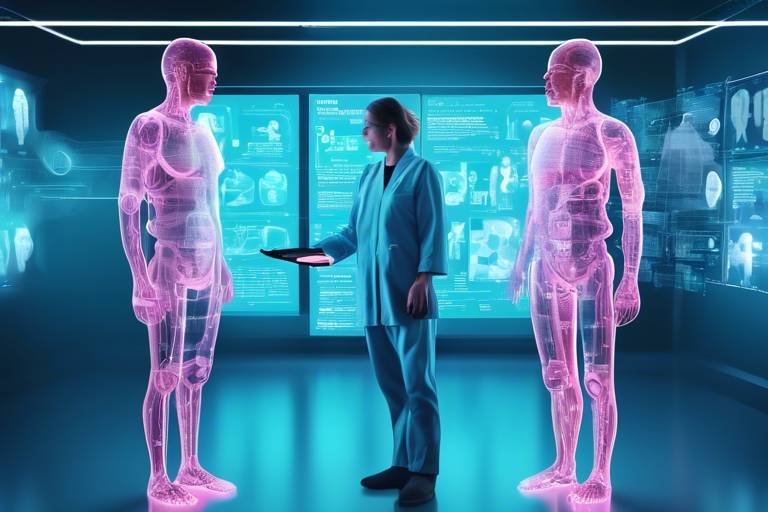The Future of Smart Environmental Monitoring
As we stand on the brink of a new era in environmental stewardship, the future of smart environmental monitoring is not just promising; it’s transformative. Imagine a world where data flows seamlessly, informing us about the air we breathe, the water we drink, and the ecosystems we cherish. This isn’t just a fantasy; it’s rapidly becoming our reality, thanks to groundbreaking advancements in technology.
At the heart of this revolution lies the integration of innovative sensor technologies that allow for real-time data collection. These sensors are like the eyes and ears of our environment, constantly observing and reporting on critical factors such as air and water quality. With the ability to track changes almost instantaneously, we can respond to environmental issues before they escalate into crises. Think of it as having a personal health monitor, but instead of tracking your heart rate, it’s monitoring the health of our planet.
The interconnectedness brought about by the Internet of Things (IoT) further amplifies these capabilities. By connecting various devices, we can share and analyze data with unprecedented ease. This means that environmental data is no longer siloed; it’s integrated into a broader network that enhances our decision-making processes. Imagine a city where traffic lights adjust based on air quality readings, or where irrigation systems activate only when soil moisture levels drop below a certain threshold. This is the kind of intelligent resource management that smart environmental monitoring enables.
Moreover, the concept of smart cities is gaining traction as urban areas begin to leverage environmental data to improve living conditions. By integrating monitoring systems into city infrastructures, municipalities can optimize resource usage, reduce pollution, and ultimately enhance the quality of life for their residents. It’s like having a city that listens and adapts to the needs of its inhabitants, creating a harmonious balance between urban development and environmental sustainability.
However, the journey towards fully realized smart environmental monitoring is not without its challenges. Issues such as data privacy, technological compatibility, and funding must be navigated carefully. It’s crucial to ensure that these systems are not only effective but also equitable and secure. After all, what good is a smart monitoring system if it compromises the privacy of its citizens or fails to integrate with existing technologies?
In conclusion, the future of smart environmental monitoring holds immense potential for creating a healthier planet. With advancements in sensor technology and the power of IoT, we are poised to make informed decisions that can lead to sustainable practices and improved urban living conditions. As we embrace this technological revolution, it’s essential to remain vigilant about the challenges we face and to engage communities in the process. Together, we can harness the power of data to protect our environment and ensure a thriving future for generations to come.
- What is smart environmental monitoring? - Smart environmental monitoring refers to the use of advanced technologies, such as sensors and IoT devices, to collect and analyze data about environmental conditions in real time.
- How does IoT enhance environmental monitoring? - IoT connects various devices, allowing for seamless data sharing and analysis, leading to better decision-making and resource management.
- What are the benefits of smart cities? - Smart cities utilize environmental data to optimize resource usage, reduce pollution, and enhance the overall quality of life for residents.
- What challenges exist in implementing smart environmental monitoring? - Challenges include data privacy concerns, technological compatibility issues, and securing adequate funding for implementation.

Advancements in Sensor Technology
In recent years, advancements in sensor technology have been nothing short of revolutionary, transforming the way we monitor our environment. Imagine a world where we can detect changes in air quality, water purity, and even soil health in real-time! This is not just a dream; it is becoming our reality thanks to cutting-edge sensors that are becoming increasingly sophisticated and accessible.
These sensors are equipped with the ability to collect data continuously, providing a constant stream of information that can be analyzed for various purposes. For instance, air quality sensors can detect pollutants such as carbon monoxide, nitrogen dioxide, and particulate matter. With this real-time data, cities can respond promptly to pollution spikes, protecting public health and the environment. Similarly, water quality sensors can monitor parameters like pH levels, temperature, and the presence of harmful chemicals, ensuring that our water sources remain safe for consumption and recreation.
One of the most exciting aspects of these advancements is the integration of smart technologies. Many of today’s sensors are not only capable of gathering data but also of processing it on-site. This means that they can analyze data locally and send only the most relevant information to centralized systems. This reduces the amount of data that needs to be transmitted, saving bandwidth and allowing for quicker decision-making. For example, a smart sensor in a river could detect a sudden increase in pollution levels and immediately alert local authorities without needing to send all the raw data.
Moreover, the miniaturization of sensors has made them more affordable and easier to deploy. Wireless sensor networks can now be set up in remote areas, providing valuable data where traditional monitoring stations might not be feasible. These networks can consist of hundreds or even thousands of sensors, all communicating with each other to create a comprehensive picture of the environmental landscape.
To illustrate the impact of these advancements, consider the following table that highlights some key types of sensors used in environmental monitoring:
| Sensor Type | Application | Benefits |
|---|---|---|
| Air Quality Sensors | Monitor pollutants in the atmosphere | Real-time data for health alerts |
| Water Quality Sensors | Assess chemical composition of water | Ensures safety for drinking and recreation |
| Soil Sensors | Measure moisture, pH, and nutrients | Improves agricultural practices |
As we look to the future, the potential for these advancements is immense. With the integration of artificial intelligence and machine learning, we can expect even more sophisticated analysis of environmental data. Imagine algorithms that can predict pollution trends or identify potential environmental hazards before they occur! The possibilities are endless, and the implications for sustainability and public health are profound.
In conclusion, the advancements in sensor technology are paving the way for a smarter and more responsive approach to environmental monitoring. These innovations not only enhance our ability to track environmental changes but also empower us to take informed actions to protect our planet. As we continue to embrace these technologies, we move closer to a future where sustainability is not just an aspiration but a reality.
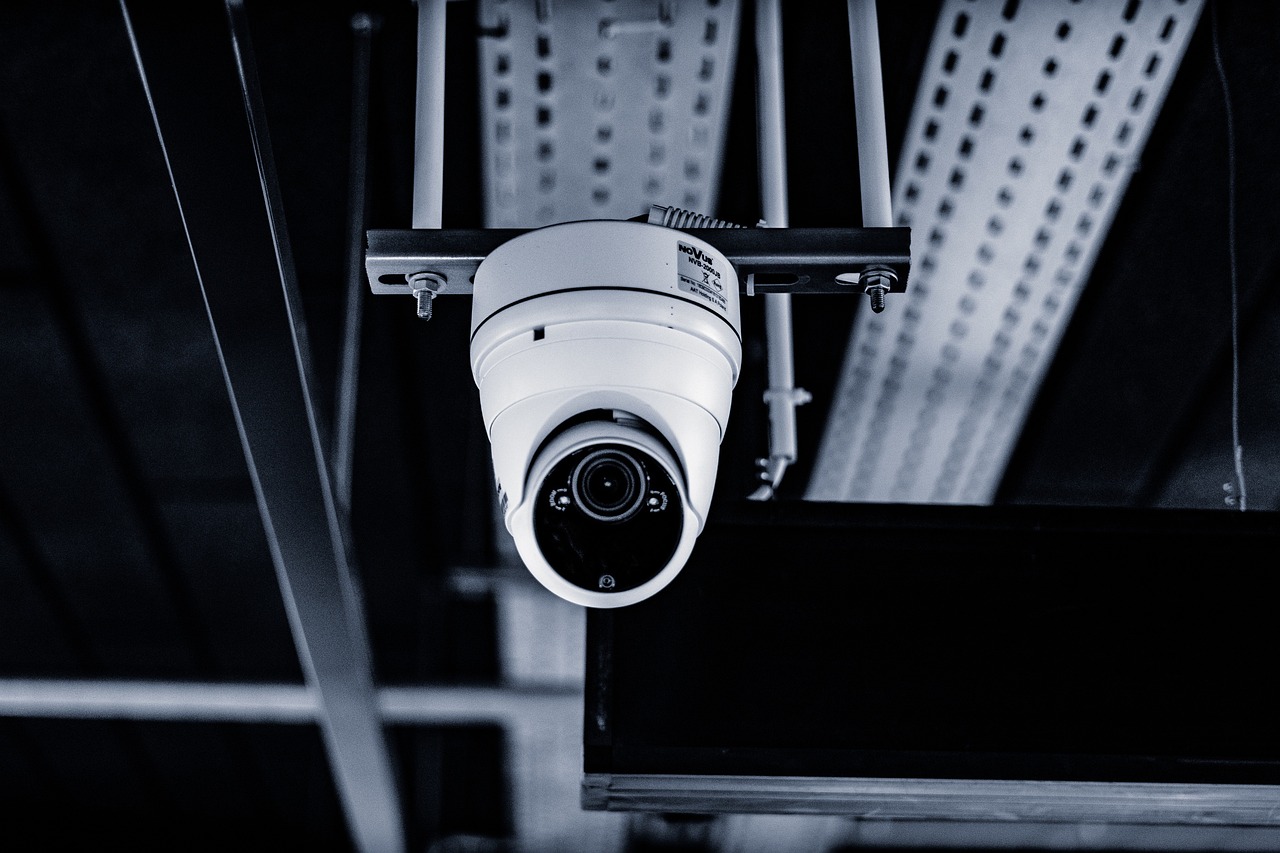
The Role of IoT in Environmental Monitoring
The Internet of Things (IoT) has emerged as a transformative force in the realm of environmental monitoring. Imagine a world where every device, from your home thermostat to massive industrial sensors, communicates seamlessly with one another. This interconnectedness isn’t just a futuristic dream; it’s a reality that is reshaping how we understand and manage our environment. By enabling real-time data sharing, IoT enhances our ability to monitor critical environmental factors such as air and water quality, temperature fluctuations, and even wildlife movements.
At the heart of this transformation lies a network of smart sensors equipped with advanced technologies. These sensors gather data continuously, sending it to centralized platforms for analysis. This means that instead of waiting for periodic reports, we can access live data that reflects the current state of our environment. For instance, imagine a smart air quality sensor installed in your neighborhood that alerts residents in real-time when pollution levels rise. This immediate feedback loop can prompt quick actions, such as reducing outdoor activities or implementing temporary traffic restrictions.
Moreover, the role of IoT in environmental monitoring extends beyond mere data collection; it also facilitates informed decision-making. With the integration of sophisticated data analytics, stakeholders can identify trends and patterns that inform policies and practices. For example, city planners can use data from various sensors to determine the most polluted areas and prioritize interventions. This proactive approach not only helps in mitigating environmental issues but also promotes sustainable urban development.
To illustrate the impact of IoT in environmental monitoring, consider the following key benefits:
- Real-time Monitoring: Continuous data collection allows for immediate responses to environmental changes.
- Enhanced Data Accuracy: IoT devices reduce human error and provide precise measurements.
- Resource Optimization: Smart systems can help manage resources more efficiently, reducing waste and costs.
- Community Involvement: IoT empowers citizens to engage with environmental data, fostering a sense of responsibility.
As cities around the globe embrace smart technologies, the integration of IoT into environmental monitoring is becoming increasingly vital. However, it’s important to recognize the challenges that accompany this technological shift. Issues such as data privacy, security, and the need for robust infrastructure must be addressed to ensure that these systems function effectively and ethically. By tackling these challenges head-on, we can harness the full potential of IoT to create a more sustainable and healthier planet.
- What is IoT in environmental monitoring? IoT refers to a network of interconnected devices that collect and share data about environmental conditions in real-time.
- How does IoT improve data accuracy? IoT devices minimize human error by automating data collection and providing precise measurements.
- What are some challenges of implementing IoT in environmental monitoring? Challenges include data privacy concerns, security risks, and the need for compatible infrastructure.
- Can citizens participate in IoT environmental monitoring? Yes, citizen involvement is encouraged through initiatives that allow individuals to contribute data and observations.

Smart Cities and Environmental Data
In today's rapidly urbanizing world, the concept of smart cities has emerged as a beacon of hope for sustainable development. These urban areas leverage cutting-edge technology, particularly in the realm of environmental data, to create more livable, efficient, and resilient communities. Imagine a city where traffic flows smoothly, air pollution levels are monitored in real-time, and energy consumption is optimized to reduce waste. This is not just a dream; it's becoming a reality through the integration of smart environmental monitoring systems.
At the heart of smart cities lies a network of environmental sensors that continuously collect data on various parameters such as air quality, noise levels, and water quality. This data is then transmitted to centralized systems where it can be analyzed and acted upon. For instance, cities can utilize this data to:
- Optimize Traffic Management: By analyzing traffic patterns, cities can adjust traffic signals in real-time to reduce congestion and emissions.
- Enhance Public Health: Monitoring air quality can lead to timely alerts about pollution spikes, helping residents take precautions.
- Conserve Resources: Smart irrigation systems can adjust watering schedules based on real-time weather data, conserving water in urban parks and gardens.
Moreover, the integration of geospatial data with environmental monitoring enhances the ability of city planners to visualize and address urban challenges. By mapping areas with high pollution levels or heat islands, decision-makers can prioritize interventions, such as increasing green spaces or improving public transportation routes. This data-driven approach not only fosters a healthier environment but also promotes greater community engagement, as residents can see the tangible benefits of these initiatives.
One of the most exciting aspects of smart cities is the potential for collaboration between various stakeholders. Local governments, businesses, and citizens can come together to share data and insights, fostering a culture of transparency and accountability. For example, when residents are equipped with mobile apps that provide real-time environmental data, they can contribute their observations, creating a comprehensive picture of urban health. This collaborative spirit not only enhances monitoring efforts but also empowers communities to take action in addressing local environmental issues.
In summary, the integration of environmental data into smart city initiatives represents a transformative shift in how urban areas are managed. By harnessing technology and fostering collaboration, cities can become more adaptable, sustainable, and responsive to the needs of their residents. As we look to the future, the potential for smart cities to lead the way in environmental stewardship is immense, paving the path for a healthier planet.
Q: What are the main benefits of using environmental data in smart cities?
A: The main benefits include improved air quality, optimized resource usage, enhanced public health, and increased community engagement.
Q: How do smart cities collect environmental data?
A: Smart cities use a network of sensors that monitor various environmental parameters, which are then analyzed to inform decision-making.
Q: Can citizens participate in environmental monitoring?
A: Yes! Many smart city initiatives encourage citizen participation through mobile apps and community programs that allow residents to contribute data and observations.
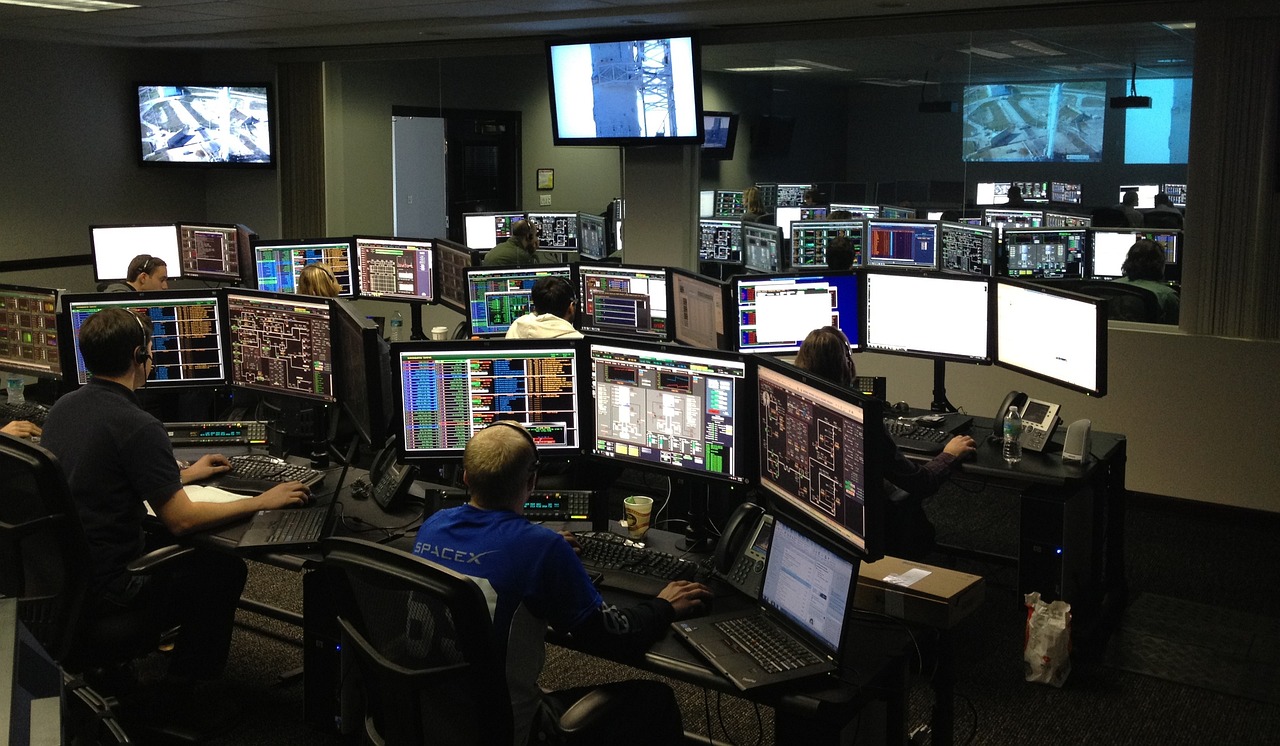
Case Studies of Successful Implementations
In recent years, numerous cities around the globe have embraced smart environmental monitoring systems, leading to significant improvements in sustainability and urban living. One standout example is Barcelona, Spain, which has integrated a network of air quality sensors throughout the city. These sensors provide real-time data on pollutants, enabling city officials to implement immediate measures to reduce emissions and improve public health. The result? A noticeable decrease in respiratory illnesses among residents and a more vibrant urban atmosphere.
Another fascinating case is Singapore, known for its commitment to becoming a "smart nation." The city-state has deployed a comprehensive system of sensors that monitor everything from water quality in its reservoirs to the levels of noise pollution in busy districts. This data not only informs government policies but also engages citizens in environmental stewardship, allowing them to understand their impact on the environment better. As a result, Singapore has seen a marked improvement in its overall livability and environmental health.
Moreover, Los Angeles, California, has taken a unique approach by utilizing a combination of satellite imagery and ground-level sensors to monitor urban heat islands. By analyzing this data, city planners can identify areas that require more vegetation or reflective surfaces, ultimately reducing heat and improving energy efficiency. This innovative approach not only enhances the urban landscape but also contributes to reducing energy costs for residents.
To showcase the effectiveness of these implementations, consider the following table that summarizes key outcomes from these cities:
| City | Technology Used | Key Outcomes |
|---|---|---|
| Barcelona | Air Quality Sensors | Reduced respiratory illnesses and improved public health |
| Singapore | Water and Noise Pollution Sensors | Enhanced citizen engagement and better environmental policies |
| Los Angeles | Satellite Imagery and Ground Sensors | Identified urban heat islands and improved energy efficiency |
These case studies illustrate the power of technology in transforming urban environments. By leveraging data from smart environmental monitoring systems, cities can make informed decisions that lead to healthier, more sustainable living conditions. As these technologies continue to evolve, the potential for creating greener cities is boundless, and other municipalities can learn valuable lessons from these successful implementations.
- What is smart environmental monitoring? Smart environmental monitoring involves using advanced technologies, such as sensors and IoT devices, to collect real-time data about environmental conditions.
- How do these systems benefit cities? They help cities track pollution levels, manage resources efficiently, and improve overall public health and quality of life.
- Can citizens participate in environmental monitoring? Yes! Many cities encourage citizen involvement through programs that allow residents to contribute data and observations.
- What challenges do cities face in implementing these systems? Challenges include data privacy concerns, technological compatibility issues, and securing funding for projects.

Challenges in Smart City Integration
Integrating smart environmental monitoring into existing urban infrastructures is no walk in the park. While the potential benefits are enormous, several challenges can hinder the seamless implementation of these technologies. One of the primary obstacles is data privacy. With countless sensors collecting data, concerns arise over how this information is stored, who has access to it, and how it is used. Citizens often worry about their personal data being compromised or misused, leading to a lack of trust in these systems.
Another significant challenge is technological compatibility. Cities often utilize a mix of legacy systems and new technologies, making it difficult to integrate advanced monitoring solutions. For instance, a city might have outdated traffic management systems that don’t communicate well with the latest environmental sensors. This lack of interoperability can create data silos, where valuable information is trapped within individual systems and not shared across the board.
Furthermore, funding poses a considerable hurdle. Smart city initiatives often require substantial investment, and securing the necessary funding can be a daunting task. Local governments may struggle to allocate budgets for these projects, especially when competing with other pressing needs like education and public safety. This financial constraint can delay or even derail potential smart environmental monitoring projects.
Lastly, there’s the issue of public awareness and engagement. Many citizens are unaware of the benefits that smart environmental monitoring can bring. Without public buy-in, initiatives can face resistance, making it challenging to gather the community support needed for successful implementation. Cities must prioritize educating their residents about the importance of these technologies and how they can contribute to a healthier environment.
In summary, while the integration of smart environmental monitoring into urban environments holds great promise, it is not without its challenges. Addressing issues of data privacy, technological compatibility, funding, and public engagement will be crucial for cities aiming to leverage these technologies effectively. By proactively tackling these challenges, urban areas can pave the way for a brighter, more sustainable future.
- What is smart environmental monitoring?
Smart environmental monitoring involves using advanced technologies, such as sensors and IoT devices, to collect and analyze data related to environmental conditions. - How does IoT enhance environmental monitoring?
The Internet of Things (IoT) connects various devices, allowing for real-time data sharing and analysis, which leads to more informed decision-making in environmental protection. - What are the benefits of smart cities?
Smart cities leverage data to improve urban living conditions, optimize resource usage, reduce pollution, and enhance the overall quality of life for residents. - How can communities get involved in environmental monitoring?
Communities can participate through citizen science initiatives, educational programs, and partnerships with local organizations to contribute data and observations.

Data Analytics for Environmental Insights
In today’s fast-paced world, the sheer volume of environmental data generated is staggering. Imagine trying to sift through a mountain of information without the right tools—it's like finding a needle in a haystack! This is where data analytics steps in, transforming raw data into actionable insights. By employing advanced algorithms and machine learning techniques, we can uncover hidden trends and patterns that are critical for effective environmental management.
Data analytics enables us to visualize complex datasets, making it easier to understand the intricate relationships between various environmental factors. For instance, analyzing air quality data alongside meteorological information can reveal how weather patterns influence pollution levels. This kind of insight is invaluable for policymakers and environmentalists alike, as it allows them to make informed decisions that can lead to significant improvements in public health and environmental quality.
Furthermore, the integration of real-time data analytics into environmental monitoring systems allows for immediate responses to emerging issues. For example, if a spike in pollutants is detected in a specific area, authorities can quickly mobilize resources to address the situation, potentially preventing a public health crisis. This proactive approach is a game-changer, shifting the focus from reactive measures to preventive strategies.
To illustrate the impact of data analytics on environmental insights, consider the following table that summarizes key benefits:
| Benefit | Description |
|---|---|
| Trend Identification | Recognizes patterns over time, aiding in predictive analysis. |
| Resource Optimization | Helps allocate resources more efficiently based on data-driven insights. |
| Enhanced Decision-Making | Supports informed choices regarding environmental policies and actions. |
| Public Engagement | Facilitates community involvement through accessible data visualization. |
Moreover, the power of data analytics extends beyond just governmental or organizational use. It empowers individuals and communities to engage in environmental stewardship. By making data accessible and understandable, citizens can take part in monitoring efforts, reporting issues, and advocating for change. This democratization of data not only fosters a sense of responsibility but also amplifies the collective impact of monitoring initiatives.
In conclusion, as we continue to harness the capabilities of data analytics in environmental monitoring, we pave the way for a more sustainable future. The insights gained from these analyses are not just numbers on a screen; they represent opportunities for action, awareness, and improvement. With every byte of data, we move closer to a healthier planet, one informed decision at a time.
- What is data analytics in environmental monitoring?
Data analytics involves the use of statistical methods and algorithms to interpret complex environmental data, helping to identify trends and inform decision-making. - How does data analytics benefit communities?
By making data accessible, communities can engage in monitoring efforts, advocate for environmental issues, and contribute to local decision-making processes. - What technologies are used in data analytics?
Common technologies include machine learning algorithms, data visualization tools, and statistical software, all of which help analyze and interpret data effectively.

Community Engagement in Monitoring Efforts
Engaging communities in environmental monitoring is not just a trend; it's a revolution in how we view our role in the ecosystem. When individuals take an active part in monitoring their environment, they become more aware of the challenges we face and the solutions we can implement together. Imagine a neighborhood where each resident is not only aware of the air quality but is also actively involved in tracking it. This kind of engagement fosters a sense of ownership and responsibility towards the environment.
Citizen science initiatives have emerged as a powerful tool in this movement. These programs empower everyday people to contribute valuable data and observations, transforming them from passive observers into active participants. For instance, local groups can organize events where community members measure air or water quality using simple kits provided by environmental organizations. This hands-on approach not only educates participants about environmental issues but also creates a stronger community bond as they work together towards a common goal.
Moreover, educational programs and workshops play a crucial role in equipping communities with the necessary knowledge and skills. By conducting workshops that explain the significance of data collection and its impact on local environmental policies, we can ignite a passion for environmental stewardship. These programs often cover topics such as:
- Understanding local environmental issues
- Learning how to use monitoring tools effectively
- Analyzing data and its implications for community health
Partnerships with local organizations further enhance community engagement. Collaborating with schools, non-profits, and local governments can provide resources and expertise, making monitoring efforts more effective and sustainable. For example, a local school might partner with a nearby university to conduct research on water quality in the community. This collaboration not only enriches the educational experience for students but also contributes to valuable environmental data.
In summary, community engagement in environmental monitoring is essential for creating a healthier planet. It empowers individuals, strengthens community ties, and fosters a culture of sustainability. By harnessing the collective power of the community, we can drive significant change and ensure a brighter future for generations to come.
| Question | Answer |
|---|---|
| What is citizen science? | Citizen science involves the public in scientific research, allowing them to contribute data and observations about their environment. |
| How can I get involved in local monitoring efforts? | Look for local organizations that host workshops or citizen science projects. You can also reach out to community groups focused on environmental issues. |
| What tools are used for environmental monitoring? | Common tools include air quality sensors, water testing kits, and mobile apps that allow users to report observations. |
| Why is community engagement important? | Engaged communities are more likely to understand and address environmental issues, leading to better outcomes for public health and sustainability. |

Educational Programs and Workshops
In today's rapidly changing world, play a pivotal role in equipping communities with the tools they need to actively participate in environmental monitoring. Imagine a neighborhood where everyone understands the importance of clean air and water, where citizens are not just passive observers but active participants in safeguarding their environment. This vision can become a reality through well-structured educational initiatives.
These programs often include hands-on workshops that delve into various aspects of environmental monitoring. Participants can learn how to use different sensors to measure air and water quality or how to interpret the data collected. For instance, a workshop might focus on teaching individuals how to set up a simple air quality monitoring station in their backyards. This not only empowers them with knowledge but also fosters a sense of ownership over their local environment.
Furthermore, educational programs can cover a range of topics, such as:
- The science behind climate change and its local impacts
- Techniques for data collection and analysis
- Understanding local ecosystems and biodiversity
- Methods for reducing personal and community carbon footprints
These sessions often encourage collaboration among participants, creating a community of like-minded individuals who can share insights and strategies. Imagine a group of local residents coming together to discuss their findings from monitoring efforts, exchanging tips on how to improve data accuracy, and brainstorming solutions to common environmental issues. Such interactions not only enhance learning but also build stronger community ties.
Moreover, educational programs can be tailored to suit different age groups and backgrounds, ensuring that everyone, from schoolchildren to seniors, can engage in meaningful ways. Schools can incorporate environmental monitoring into their curricula, offering students the chance to conduct real-world experiments and projects. This hands-on experience is invaluable, as it helps to instill a sense of responsibility towards the environment from a young age.
In conclusion, educational programs and workshops are essential for fostering a culture of environmental stewardship. By providing the community with the knowledge and skills needed to monitor their surroundings, we empower them to take action and advocate for a healthier planet. As we look to the future, the integration of these initiatives into local communities will undoubtedly lead to more informed citizens who are ready to tackle the environmental challenges ahead.
| Question | Answer |
|---|---|
| What are the benefits of participating in educational programs? | Participants gain valuable knowledge about environmental issues, learn how to monitor their surroundings, and become empowered to take action. |
| Who can attend these workshops? | Workshops are typically open to everyone, including students, adults, and seniors, catering to various skill levels. |
| How can I find educational programs in my area? | Check with local environmental organizations, community centers, or schools for upcoming workshops and programs. |
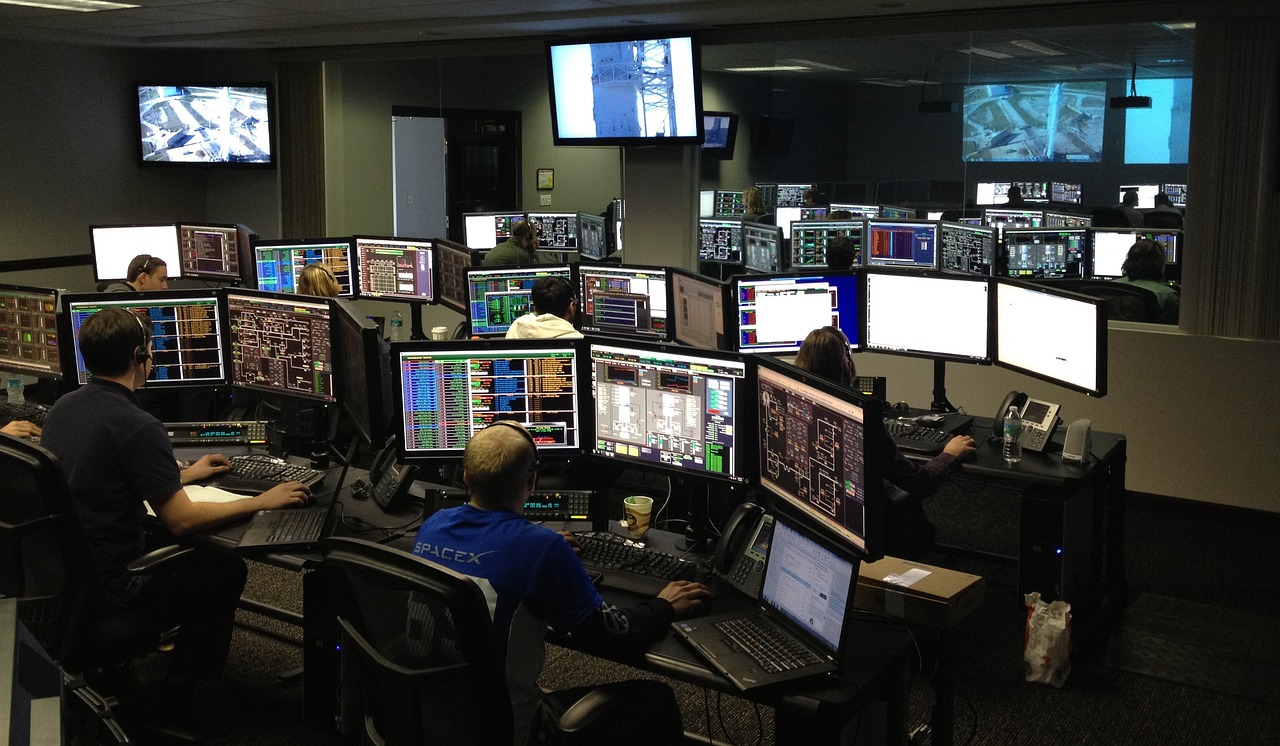
Partnerships with Local Organizations
Partnerships with local organizations play a crucial role in enhancing the effectiveness of smart environmental monitoring initiatives. These collaborations bring together diverse stakeholders, including non-profits, community groups, and educational institutions, to create a robust framework for environmental stewardship. By pooling resources and expertise, local organizations can amplify the impact of monitoring efforts and foster a sense of community ownership over environmental issues.
One of the primary benefits of partnering with local organizations is the access to grassroots knowledge. These organizations often have deep ties to the community, understanding local environmental challenges and the unique needs of residents. For instance, a local environmental non-profit might have insights into specific pollution sources or areas that require urgent attention, which can significantly inform monitoring strategies.
Moreover, these partnerships can facilitate the development of educational programs tailored to the community's needs. By collaborating on workshops and training sessions, organizations can equip residents with the skills and knowledge necessary to participate actively in environmental monitoring. This not only enhances data collection efforts but also cultivates a culture of sustainability where individuals feel empowered to contribute to their environment.
Additionally, partnerships can lead to innovative solutions to common challenges in environmental monitoring. For example, local organizations can help in mobilizing volunteers for data collection efforts, ensuring that monitoring is not only comprehensive but also inclusive. This collective approach can also enhance data accuracy and reliability, as more individuals are involved in the process.
However, it's essential to establish clear communication and shared goals among partners to maximize the benefits of these collaborations. Regular meetings, updates, and feedback sessions can help maintain alignment and foster a collaborative spirit. When local organizations and communities work hand-in-hand, the potential for impactful environmental monitoring initiatives increases exponentially, leading to healthier and more sustainable environments.
- What types of local organizations can participate in environmental monitoring partnerships?
Local organizations can include non-profits focused on environmental issues, educational institutions, community groups, and even local businesses that are committed to sustainability. - How can communities benefit from these partnerships?
Communities can gain access to resources, knowledge, and support for environmental initiatives, leading to improved local conditions and increased awareness of environmental issues. - What role do volunteers play in these partnerships?
Volunteers are crucial as they help with data collection, community engagement, and spreading awareness about environmental monitoring efforts. - How can I get involved with local organizations focused on environmental monitoring?
You can reach out to local non-profits, attend community meetings, or participate in workshops to find ways to contribute to environmental monitoring initiatives.
Frequently Asked Questions
- What is smart environmental monitoring?
Smart environmental monitoring refers to the use of advanced technologies, such as sensors and IoT devices, to collect and analyze data about various environmental factors like air and water quality. This real-time data helps in making informed decisions for sustainability and resource management.
- How do advancements in sensor technology impact environmental monitoring?
Advancements in sensor technology allow for more precise and real-time data collection. These innovations enable us to track changes in environmental conditions quickly, facilitating timely responses to potential issues such as pollution or resource depletion.
- What role does the Internet of Things (IoT) play in environmental monitoring?
The Internet of Things connects various devices, enabling seamless data sharing and analysis. This interconnectedness enhances monitoring capabilities, leading to better decision-making regarding environmental protection and resource management.
- How do smart cities utilize environmental data?
Smart cities leverage environmental data to improve urban living conditions. By integrating monitoring systems, they can optimize resource usage, reduce pollution, and enhance the overall quality of life for residents.
- What challenges do cities face when integrating smart environmental monitoring?
Integrating smart environmental monitoring into existing urban infrastructures presents challenges such as data privacy concerns, technological compatibility issues, and securing adequate funding. Addressing these challenges is crucial for effective implementation.
- How does data analytics contribute to environmental insights?
Data analytics plays a vital role in interpreting large volumes of environmental data. By utilizing advanced algorithms and machine learning techniques, we can identify trends and patterns, which is essential for proactive environmental management.
- Why is community engagement important in environmental monitoring?
Engaging communities in environmental monitoring fosters awareness and encourages collective action. Citizen science initiatives empower individuals to contribute data and observations, amplifying the impact of monitoring efforts.
- What are some effective ways to educate communities about environmental monitoring?
Educational programs and workshops can equip communities with the necessary knowledge to participate in environmental monitoring. These initiatives promote understanding of local environmental issues and the significance of data collection.
- How can partnerships with local organizations enhance monitoring efforts?
Collaborating with local organizations can significantly enhance community engagement in environmental monitoring. Partnerships provide valuable resources, expertise, and support, leading to more effective and sustainable monitoring efforts.









